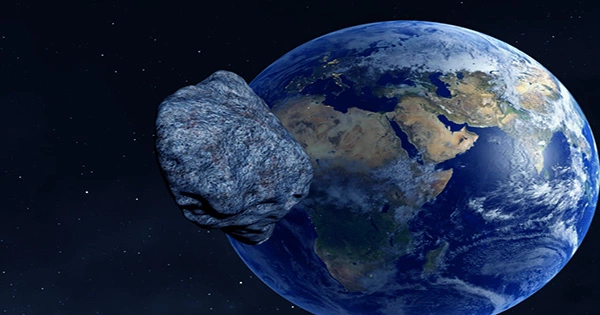At 2:54 a.m. EST on Tuesday, February 22, asteroid (455176) 1999 VF22 will travel past Earth. Because it approaches our planet and is fairly huge, this object is classed as “possibly hazardous,” yet the flyby next week is totally safe. The space rock will not approach the Earth any closer than 5,366,000 kilometers (3,334,000 miles), which is over 14 times the distance between the Earth and the Moon.
The object has an absolute magnitude of 20.7 according to NASA’s Small-Body Database, but without an albedo – the fraction of reflected light by the surface – it’s difficult to assess its exact size. Between 190 and 430 meters (623 to 1,410 feet) is the ballpark figure, with some observations in 2019 putting it at 225 meters (738 feet)? This will be the closest approach of this space rock to our planet in over a century. To get this asteroid closer to our planet than next week’s contact, one would have to wait until 2150 – which happens to be roughly the same time as next week’s encounter, February 23.
Its previous closest encounter occurred on October 31, 1999. Despite its size and proximity to Earth, the Catalina Sky Survey did not locate it until days later, on November 10. If you want to try to see it pass by, you’ll need a good telescope — or you can watch it pass by live on February 21 at 7 p.m. EST on the Virtual Telescope Project’s live stream.
There are just a few asteroids with “known” sizes (or shapes). The majority of asteroids have a skewed form (that is, very few are close to being spherical). However, an asteroid’s size (diameter of an analogous sphere) may be calculated using its absolute magnitude H and a geometric albedo.
It is necessary to consider the uncertainty in H (usually 0.5 mag.) as well as the uncertainty in albedo when using this calculation to estimate the size of an object (typically assumed based on some spectral class corresponding to an assumed composition of the object – e.g., S-class asteroid with an assumed albedo of 0.15).
An inaccuracy in the predicted albedo might result in a significantly erroneous diameter, as shown in the table above. For example, if you anticipated an albedo of 0.15 for H=22 but the real albedo was closer to 0.05, your calculated diameter would be almost 2 (1.7) times too small.
















